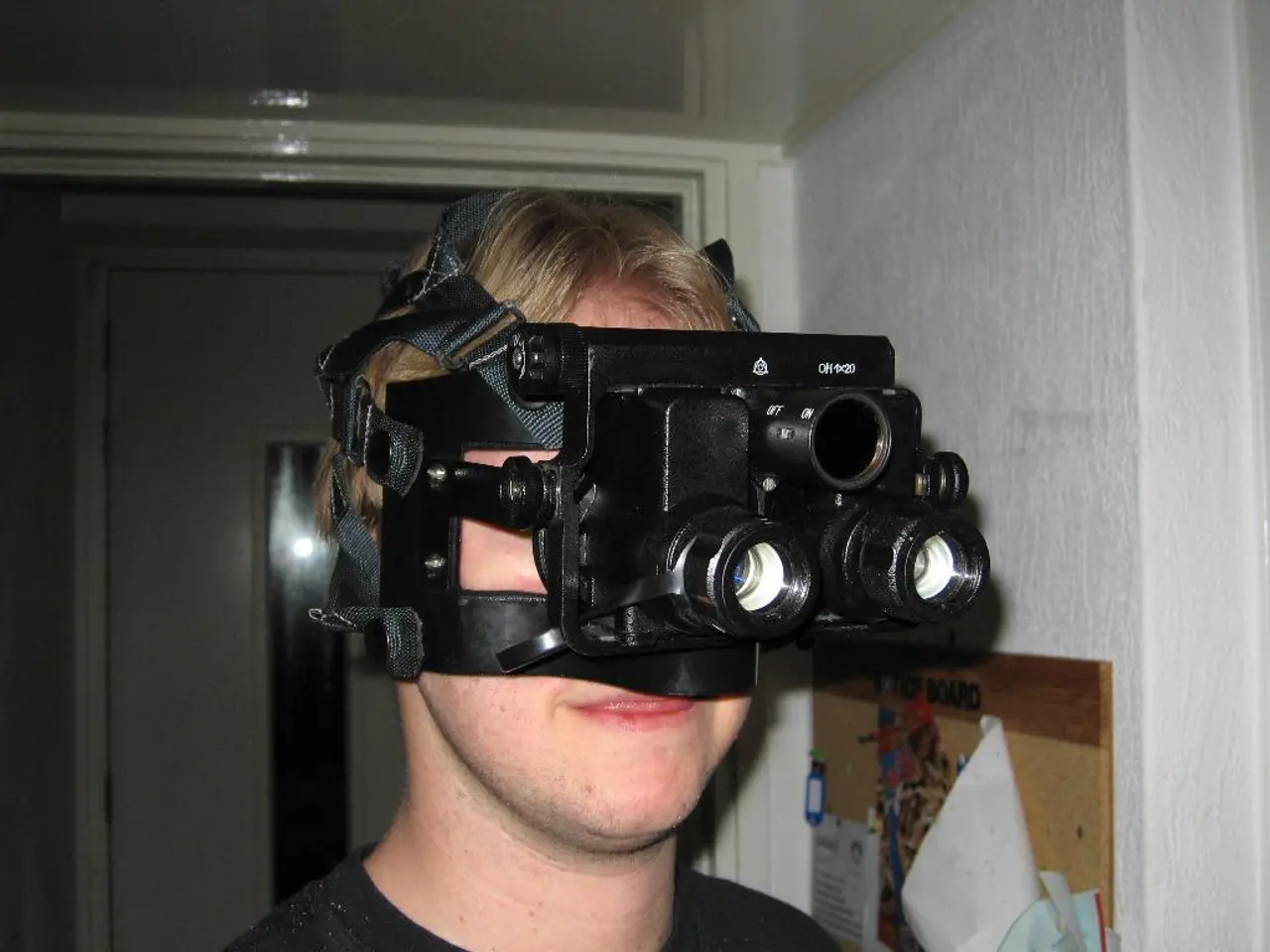Virtual reality could pave the way for advancements in the field of education.
In the ever-evolving landscape of education, virtual reality (VR) is emerging as a promising solution to address educational limitations, particularly in remote areas and developing countries. This groundbreaking technology offers immersive, realistic simulations that enhance engagement, understanding, and skill mastery, while also providing accessible, location-independent learning opportunities [1][3].
One of the key advantages of VR is its ability to facilitate virtual field trips to global locations, enabling students to explore historical sites, natural ecosystems, and more, enhancing experiential learning and knowledge retention in subjects like history and science [3]. For instance, the University of Bristol uses VR to reconstruct historical battles, heightening student engagement and emotional connection to the material [3]. Similarly, K-12 education in New York City incorporates VR for immersive science lessons, allowing students to virtually explore places like the Amazon rainforest, improving understanding of biodiversity [3].
In remote or low-resource areas, VR overcomes geographical and physical infrastructure barriers by delivering high-fidelity, scalable training modules accessible via the internet. This has been especially impactful in medical education, where VR platforms allow learners worldwide to practice clinical procedures through repeatable, AI-enhanced simulations with real-time feedback, reducing training time and error rates significantly [2].
VR also aids special education by enabling students with disabilities to explore tactile and auditory virtual environments tailored to their needs, fostering independence and improved academic performance [1][3].
The cost of educational-specific VR sets is expected to drop as the technology becomes mainstream, making it more attainable for everyday users, particularly educational institutions [2]. Platforms like Second Life and Kitely have been exploiting this possibility for years, but their ability to immerse students is severely limited compared to VR [2].
VR's immersive and interactive nature not only improves competency and engagement but also democratizes education by making high-quality learning experiences available regardless of geographical location [1][2][3]. However, it's important to note that the global education industry, currently worth $4.4 trillion annually, could potentially be addressed by connected technologies to ensure equitable access to quality education for all [1].
A study by Education International argues that living far from school negatively impacts students' health and educational achievement, particularly in developing countries [1]. Until now, schools lacked the resources and technological capacity to give each student a platform to pursue their curiosity outside lesson plans. With VR, this barrier is being broken down, offering a new world of possibilities for students and educators alike.
Sources: [1] Baczynski, P. (2022). Virtual Reality in Education: A New Era of Learning. EdTech Magazine. [2] Education International. (2021). The Impact of Virtual Reality on Education in Developing Countries. [3] University of Bristol. (2020). Virtual Reality Enhances Learning in History and Science. University of Bristol News.
Technology in education and self-development is significantly advanced with the emergence of online education and virtual reality (VR), particularly in the delivery of immersive, realistic simulations for learning. This groundbreaking technology, such as the university's VR reconstruction of historical battles, promotes improved understanding and engagement in subjects like history and science, while also offering accessible, location-independent learning opportunities.




